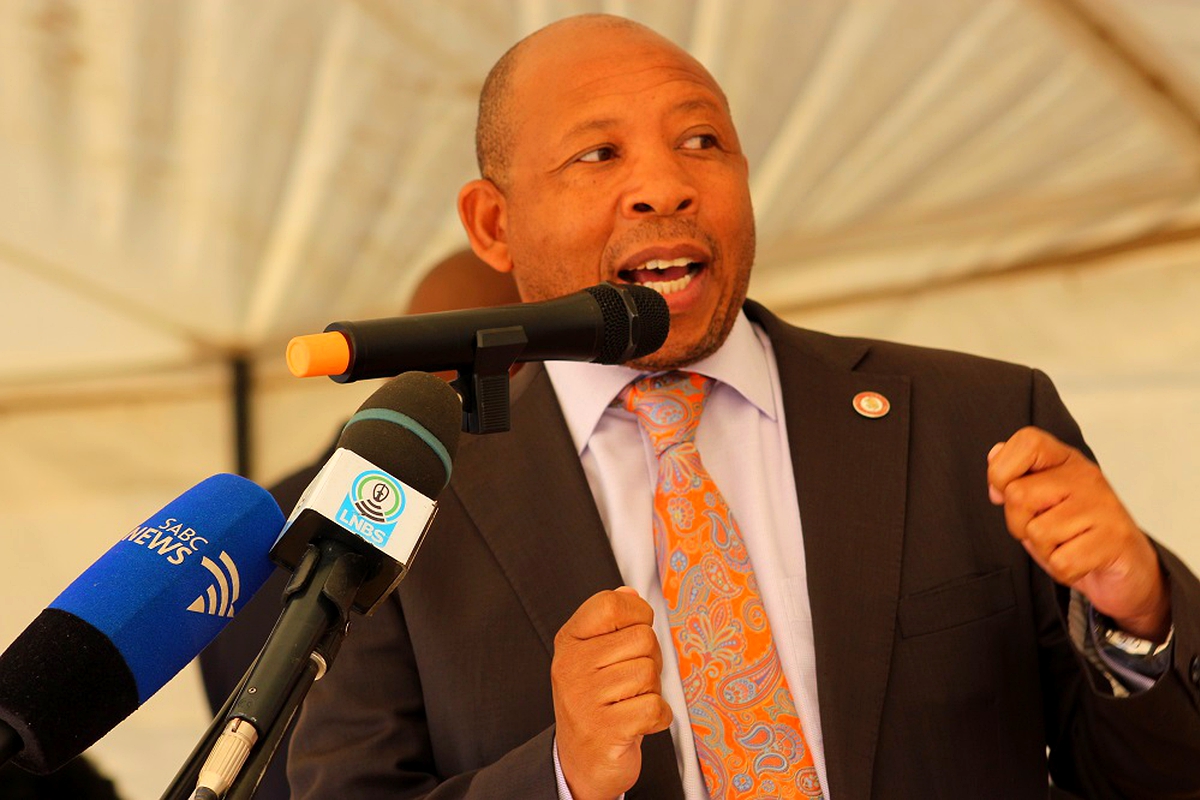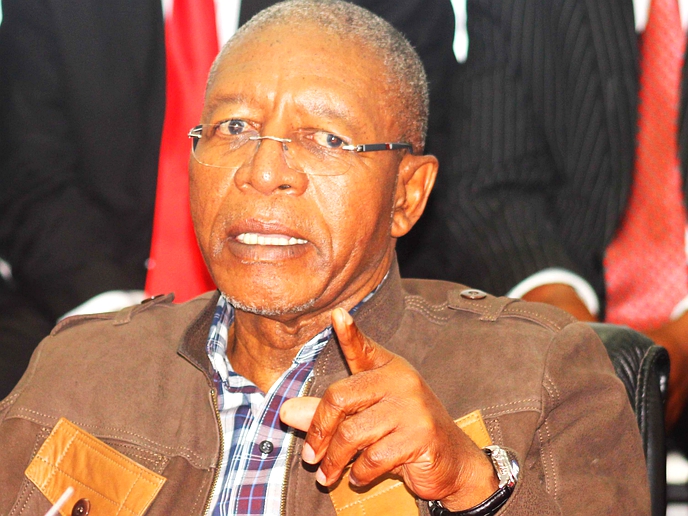Lesotho is a garment manufacturing hub in southern Africa, and has attracted manufacturing firms from South Africa on account of cheaper labour and a more business-friendly environment. However, the textile business is tough, and its competitive advantages are fragile. One firm shows the imperative for finding an alternative growth path. The question is, will Lesotho follow?
comments
Nov. 28, 2019
MARIE-NOELLE NWOKOLO, EMILY VAN DER MERWE AND GREG MILLS
9 min read
Lesotho at the crossroads

Minister of finance Moeketsi Majoro
Times are tough in Lesotho. Austerity measures are in place as economic growth remains stuck at 1.4%, while the population has increased by one-quarter this century to more than 2.2 million. “We ideally need 10% economic growth,” says Finance Minister Dr Moeketsi Majoro. “Five percent will only just be enough.” The kingdom’s challenges have been complicated by low growth in South Africa, notes the minister, who previously served as a southern African representative at the International Monetary Fund (IMF).
The question is: What are the likely sources of Lesotho’s growth imperative?
Madhav Dalvi is the managing director of CGM, a Taiwanese-owned jeans manufacturer in Maseru. Established in 1987, CGM now employs 3,000 people to manufacture half a million pairs of jeans per month, or 25,000 items per day. Indian-born, Dalvi has lived in Lesotho for more than 15 years.
The US African Growth and Opportunity Act (Agoa), enacted in 2000, which sought to fast-track development especially among least-developed countries by allowing duty-free imports into the US from Africa, is a large part of the reason why clothing manufacturers are able to survive in Lesotho.
Agoa has created a competitive advantage, as a result of which manufacturers that would otherwise have gone elsewhere, such as Bangladesh, Cambodia and Vietnam on account of labour and logistics costs, are now able to discount their African cost base for the US market.
But this cost advantage is vulnerable to any change in US regulations.
As a result, of the 19 apparel factories in Lesotho, CGM is the only one that has diversified away from the US market. While Agoa has been extended and amended several times since its first phase (2000-2008), most recently until 2025, the arrangement is always vulnerable to political vagaries and sugar levels. That’s why, when a second extension was enacted to last until 2012, CGM decided to get out of the risky business of supplying to the US and instead focused on the South African market.
Whereas CGM supplied 100% of its products to the US in 2012, by 2014 it was sending 100% of its garments to South Africa.
“We calculated, at the time [in 2012], that the South African market was worth 700 million clothing units per year,” says Dalvi, meaning that their 500,000 units would easily be absorbed by South African retail chains.
Market diversification was just one part of their strategic shift.
The second strand was product diversification. CGM today supplies a wide variety of clothing products, not only denim pants. Their key competitive advantage after the move, Dalvi notes, is time-to-market. Design and manufacturing lead-time – key in the world of fast fashion where trends are fickle – is much quicker compared to their South Asian competitors, the difference between 60 or 180 days from factory order to shop counter. It also allows for greater inventory control on the part of retailers, who don’t want to be stuck with months of stock long after fashions have changed.
CGM has also adapted to the times in other ways. Dalvi claims they are the “most ethical supplier of denim” in the market, on account of their social and environmental efforts. Not only is there clear oversight and transparency into workers’ conditions, and management from within Lesotho (as opposed to many other manufacturers, who are managed by head offices in Taiwan or China); they also boast a circular water system which cleans and reuses all “blue water” from denim washing, and use state-of-the-art laser technology for jean “distressing”, rather than the chemical processes used by many competitors.
Enjoy our daily newsletter from today
Access exclusive newsletters, along with previews of new media releases.
CGM’s is a story of successful adaptation and diversification. But they are not representative of other garment manufacturers in Lesotho, nor of Lesotho’s economy. Lesotho’s economic growth model is seemingly built on being just a little bit better than South Africa, profiting from the downturn in South Africa’s manufacturing capacity.
Innovation has not until now been the byword. Slow growth in South Africa has compounded weakening revenues from the Southern African Customs Union (SACU), which traditionally supplied nearly half of government income, though it has fallen more recently to just one-third. As a result, the fiscal deficit has more than doubled over the last five years, to 5.6% of GDP, while public debt has increased to 47% of GDP from 39% over the same period. Add in a tough climate, agricultural degradation, and scarce job opportunities outside of government, and the scene is set for political fractiousness of the nature of which Lesotho is infamous.
Little wonder that Lesotho remains vulnerable to shifts in aid flows (some $120-million annually), rainfall patterns, and the price of commodities, remittances and its share of tariff income from SACU. Donor borrowing has shot up nearly 20-fold from R63-million to R1.2-billion between 2017/18 and 2018/19, according to the official budget, while Lesotho’s current account deficit has worsened at the same time from 4.8% to 8.4% of GDP.
This reflects stagnancy in investment inflows, at around $40-million annually. And those figures reflect a relative dearth of investment opportunities outside mining and the apparel sectors. Lesotho’s low ranking on the World Bank’s Ease of Doing Business Index, at 122 out of 190 countries in 2019 for example, or its drop in Transparency International’s corruption index by nearly 20 places since 2010 to 78th position out of 180 countries does not help its cause or a narrative claiming Lesotho as a good place to do business.
It’s therefore unsurprising that many of Lesotho’s skilled population leave for South Africa where as many as one-quarter live and work, including some 50,000 mineworkers. Also, that in recent years, public sector employment grew while the private sector shrunk. The public sector wage bill equals half of the national budget, the highest ratio in sub-Saharan Africa.
And poverty is omnipresent. Sixty percent of rural Basotho live on less than $1.25 per day. As much as 80% of the rural population, two-thirds of the total, rely on agriculture for their livelihood, which remains almost entirely rain-fed. As a result, declining crop production translates into food insecurity for nearly 40% of the total population.
Lesotho thus finds itself at a crossroads, needing new engines for growth, a better-integrated role for the state, and a dynamic private sector to help it seize opportunities in regional and global markets. Simply put, the government is taking up too much space, and crowding out the private sector.
The answers lie partly in what CGM has done.
Lesotho has to drive a diversification agenda, using all of its assets – in tourism, farming, mining, the building of dams and sale of water to South Africa and, notably, in manufacturing.
The manufacturing sector possesses a number of distinct advantages, which Lesotho could leverage in its search for jobs and diversification. Effective wages are less than a third of what they are in South Africa, efficiency another 30% higher, according to investors with experience in both geographies, corporate tax just 10% and electricity both reliable and half the cost. One apparel investor who has made the move claims, “the cost per unit is five times lower in Lesotho than South Africa”.
Lesotho’s textile and apparel industry already provides about 45,000 jobs, 70% of which are held by women, contributing not less than 10% of GDP.
The kingdom could position itself at little or no cost to further radically outperform its main rival and benchmark, South Africa, in the manufacturing sector outside of textiles by fast-tracking work permits, allocating land for the next generation of industrial parks in public-private partnerships – unlike a highly mercantilist South Africa – to pursue free and preferential trade deals for Basotho products including with Asia and the US, and chasing new investment.
More specifically, and in the short term, the government could spur and diversify business growth by:
Improving access to finance. Entrepreneurs complain that access to credit is a major impediment to business, and one which government can easily enough address.
Facilitating access to foreign capital to expedite imports of primary inputs. Lesotho’s foreign currency reserves have recently deteriorated to just 3.4 months’ worth of imports, putting local industry at risk.
Reducing logistical costs. Shipping costs from Durban to Lesotho are higher than from India to Durban, 10 times the distance. A cost-free initiative would focus on improving trust and relations with SA border officials, to prevent the senseless unpacking of cargo coming into South Africa after it has already been cleared by Lesotho customs.
There are other things to be done, including on farming, and in boosting tourism. The agricultural sector with its decades of experience offers opportunities for growth, population upskilling and value-addition. Whether it is commercial production of fruits and vegetables, cannabis, almonds or salmon farming – there are many prospects. These will need to be properly packaged by the government to reduce the uncertainties and risk premium.
The wool and mohair sector is another exciting prospect, already partly successful, but offering much more in an era of increasing scepticism about artificial fabrics. Mainly farmed by smallholders, one million each of Merino sheep and Angora goats contribute nearly 5% of Lesotho’s GDP. A more positive thread is not difficult to imagine. Improve extension services through a commercial out-grower arrangement, and yields could radically improve. Cut out the middlemen, and more value could be placed in the farmers’ pockets, thus enabling greater investment, in turn, in their flocks.
Lesotho was the second-largest producer of mohair in the world 10 years ago, supplying just fewer than 15% of global demand. South Africa supplies another half of global stocks, followed by the US. One South African company has facilitated the export of Lesotho’s wool and mohair for the past four decades through Port Elizabeth. By some accounts, as much as half of the revenue from wool is lost to middlemen. For example, one-fifth of the Lesotho National Wool and Mohair Growers’ Association’s revenue goes towards commission, handling fees and insurance.
In a cack-handed attempt to recapture some value within Lesotho, in May 2018 the Agricultural Ministry ruled that only licensed traders could export wool. Although intended to divert exports from South Africa, this created an effective monopsony when only one licence was issued. Inevitably with such an arrangement, the Chinese businessman reportedly stopped paying producers and sold their wool on for less than the market value.
Such controversies notwithstanding, Lesotho is also missing out on value addition possibilities in the wool and mohair industry. By exporting unprocessed wool to China, it is exporting valuable job opportunities – an absurdity in a country with 40% youth unemployment.
Similarly, despite Lesotho’s scenic advantages, tourism is underperforming. Lesotho ranks just 166 out of 185 countries in terms of the contribution of tourism to GDP, of which more than 90% are South Africans. Its topography offers opportunities for biking and mountain-related sporting activities – all currently under-explored.
There is much more to be gained from diversification and innovation than from simply staying the course. Standing still is not an option given the uncertainty around Agoa and the challenge faced by the government in successfully curbing its spending habits.
CGM is a microcosm of what successful adaptation could look like. The question is: Does Lesotho have the leadership to scale up and beyond textiles?
DM
Tailored for you






